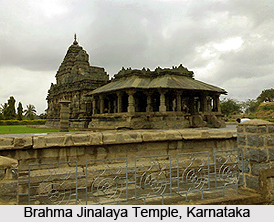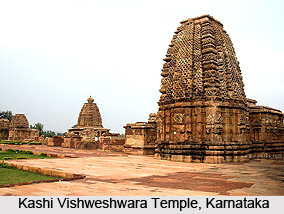 Temples of Lakkundi in Gadag District, Karnataka are above 50, boasting of diverse architectural patterns and antiquities, many of which lie in demolished conditions presently, and are exquisite instances of temple architecture prevalent during the regime of the Kalyani Chlukyas, which dates to the 12th century. Lakkundi is close to Hampi and about 25 kms away from Mahadeva Temple (Itagi) and 14 kms from Dambal. Composed of green schist, whose external walls are elaborately embellished, a majority of the Lakkundi temples are dedicated to Lord Shiva and his incarnations.
Temples of Lakkundi in Gadag District, Karnataka are above 50, boasting of diverse architectural patterns and antiquities, many of which lie in demolished conditions presently, and are exquisite instances of temple architecture prevalent during the regime of the Kalyani Chlukyas, which dates to the 12th century. Lakkundi is close to Hampi and about 25 kms away from Mahadeva Temple (Itagi) and 14 kms from Dambal. Composed of green schist, whose external walls are elaborately embellished, a majority of the Lakkundi temples are dedicated to Lord Shiva and his incarnations.
Some of the reputed temples at Lakkundi include Mallikarjuna Temple at Kuruvatii, Halagunda Basavanna Temple, Neelakanteshwara Temple, Laxminarayana Temple, Kashi Vishweshwara Temple, Virabhadra Temple, Someshwara Temple, Manikeshwara Temple, Nanneshwara Temple, Virupaksha Temple, Nadayadeva Temple and several others. Gadag District itself is famous for its numerous temples like Trikuteshwara Shiva Temple which are excellently ornate and follow typical southern Indian styles of architecture. Beautifully ornamental pillars and screens of carved stones are impressive features of Lakkundi temples. The Brahma Jinalaya is yet another attractive temples of the Jains, located here.
 Brahma Jinalaya Temple
Brahma Jinalaya Temple
Established by the queen Attimabbe, the Brahma Jinalaya Temple or `Basadi` is an excellent representation of Karnataka temple architecture and is the biggest Jain temple in the region of Lakkundi. Lord Mahavira is the presiding deity of the temple which was built with the aide of textured chloritic schist, adorned with unique and delicate carvings. It was created during the latter portion of the 11th century and possesses a five-storeyed `vimana` with a closed square-shaped `navaranga` in front. The idol of Mahavira is present inside the `Garbagudi` of the temple.
Kashi Vishweshwara Temple
Also referred to as Kashi Vishwanatha Temple, Kashi Vishweshwara Temple is famous for its carvings created on the towers and doorways, dedicated to the Hindu God, Lord Shiva. A tiny shrine faces towards the main shrine which is situated on the western part of the temple. There might have probably been an open `mandapa` on the platform between both the shrines. Visitors would observe an entrance which is one the eastern side and another on the southern end of the temple. The temple `shikhara` has been constructed in the northern Indian style of architecture and it resembles a lathe that might have been employed to erect the circular pillars.
Nanneshwara Temple
Towards the eastern end of the Kashi Vishweshvara Temple is existent the Nanneshwara Temple and is quite beautiful as it is similar to a simplistic replica of the impressive Kashi Vishweshvara Temple. Historians are of the view that the Nanneshwara Temple might have probably been built as a template model, prior to the erection of the Kashi Vishweshwara Temple.





















